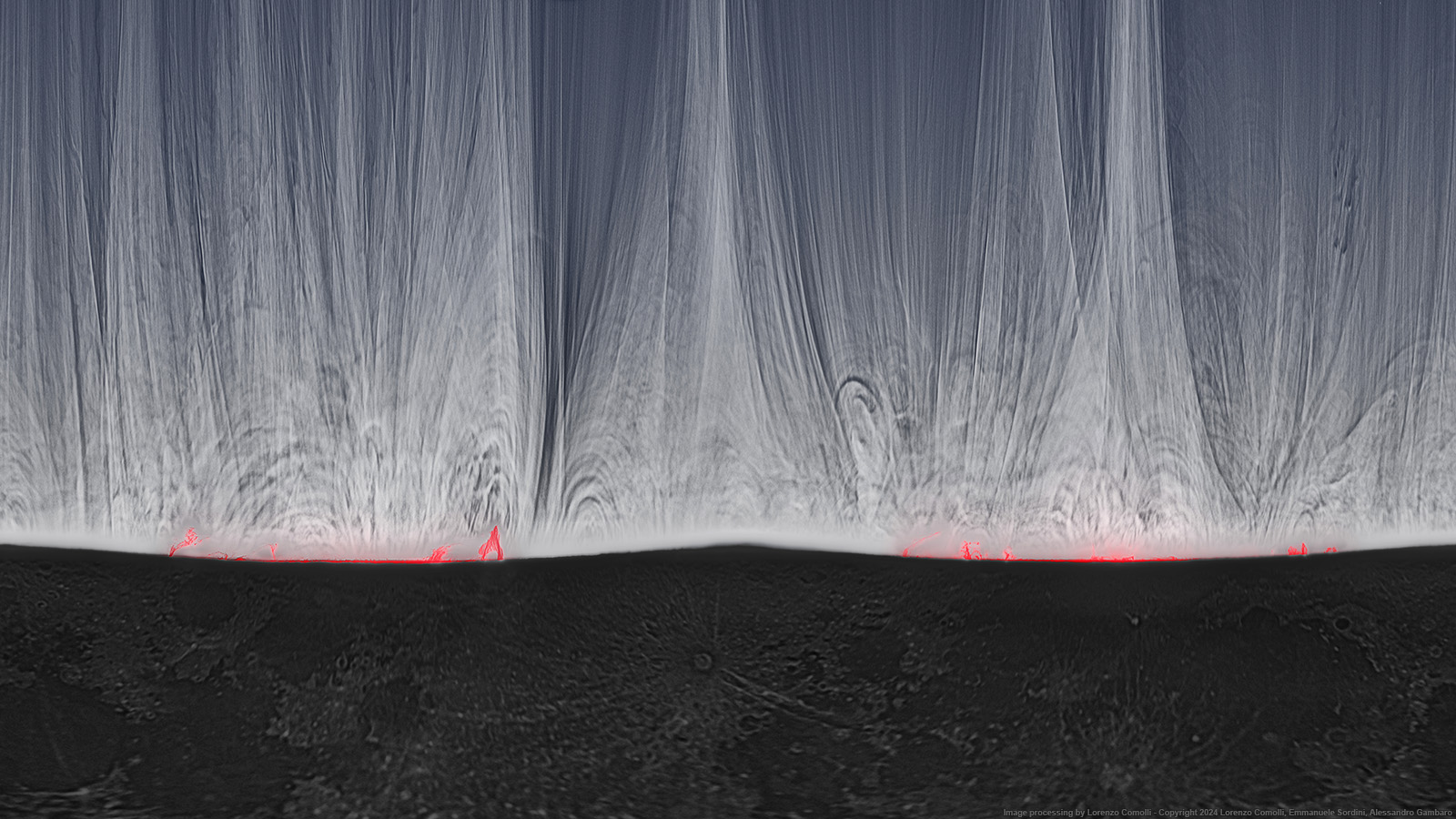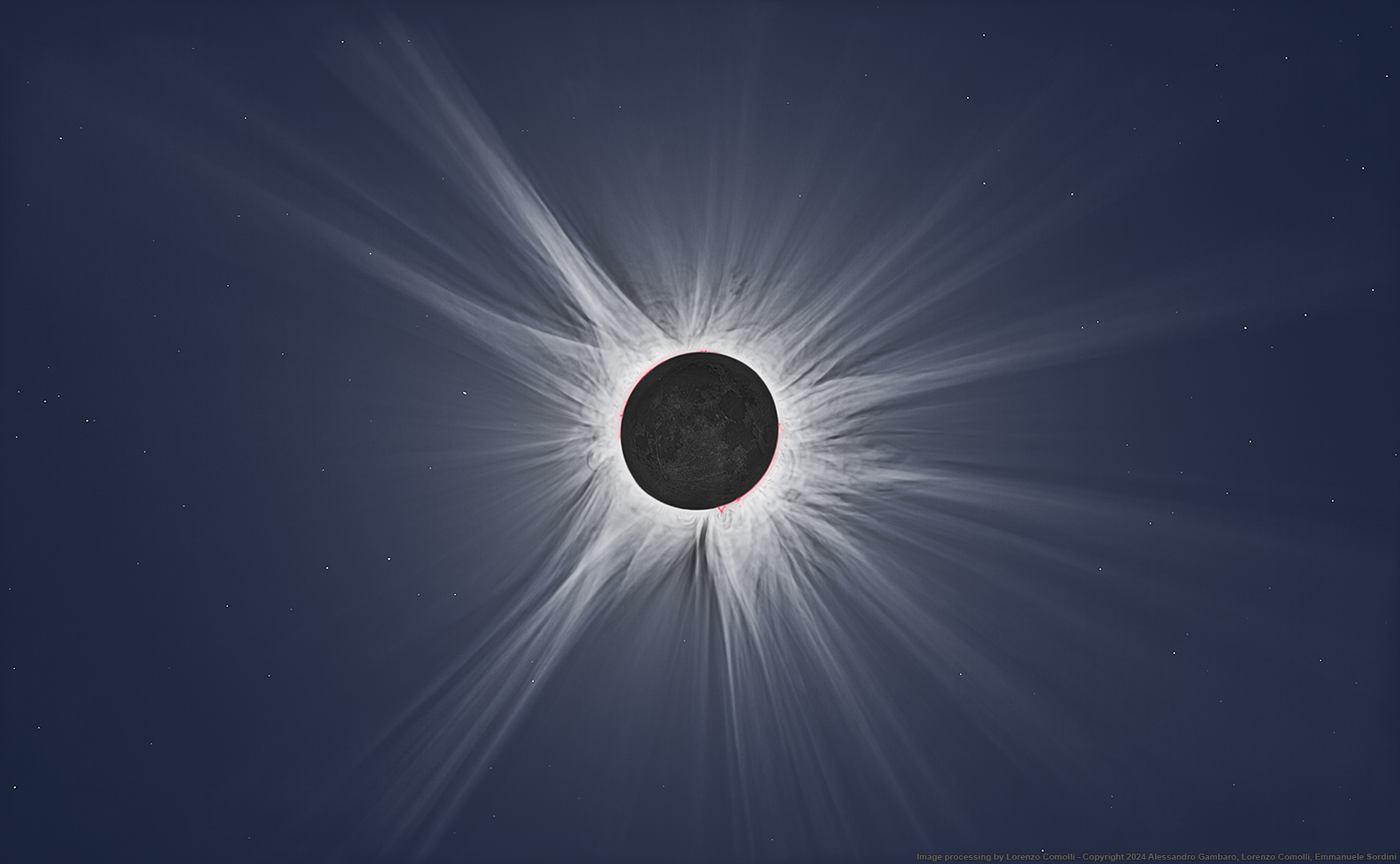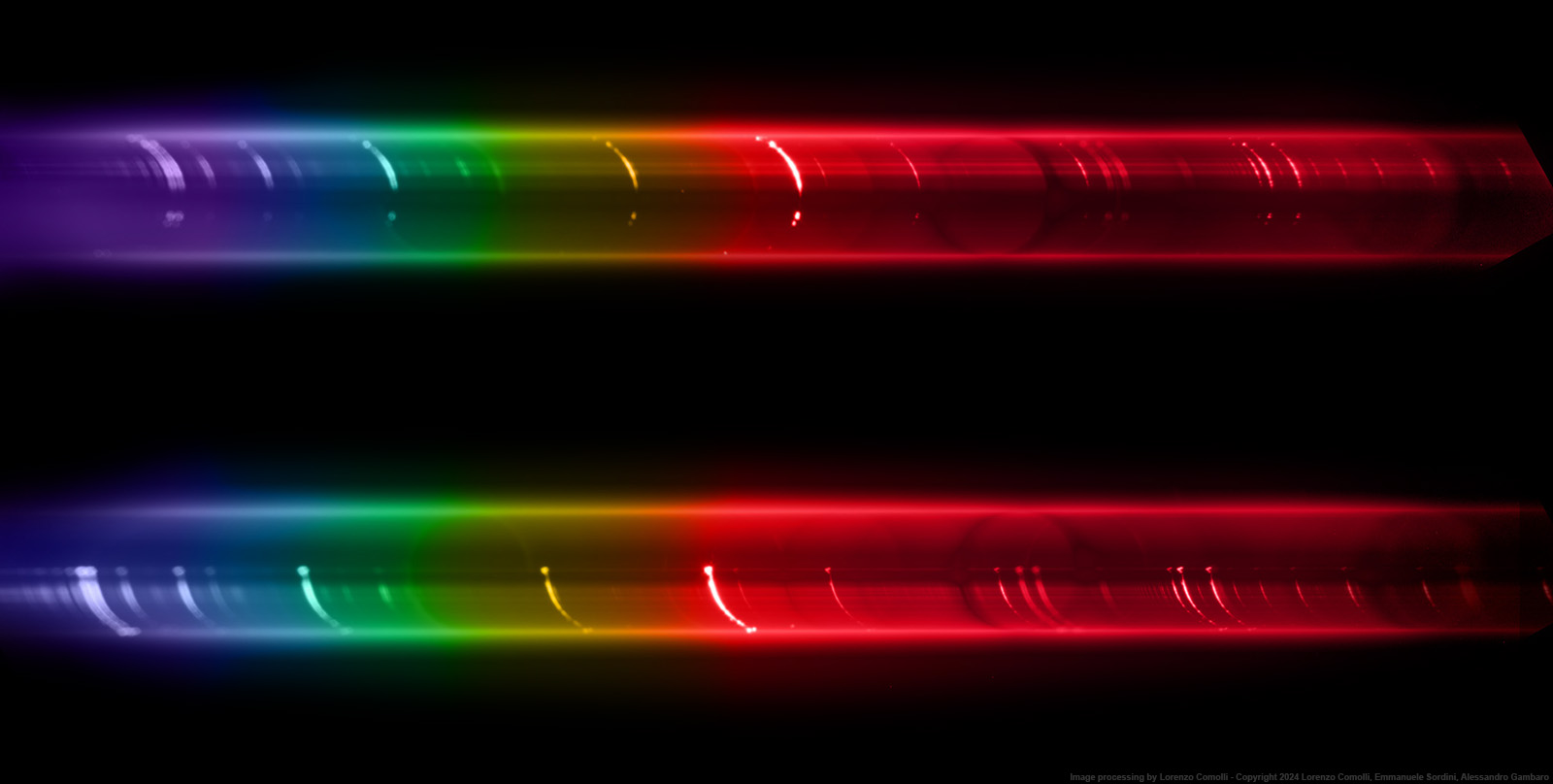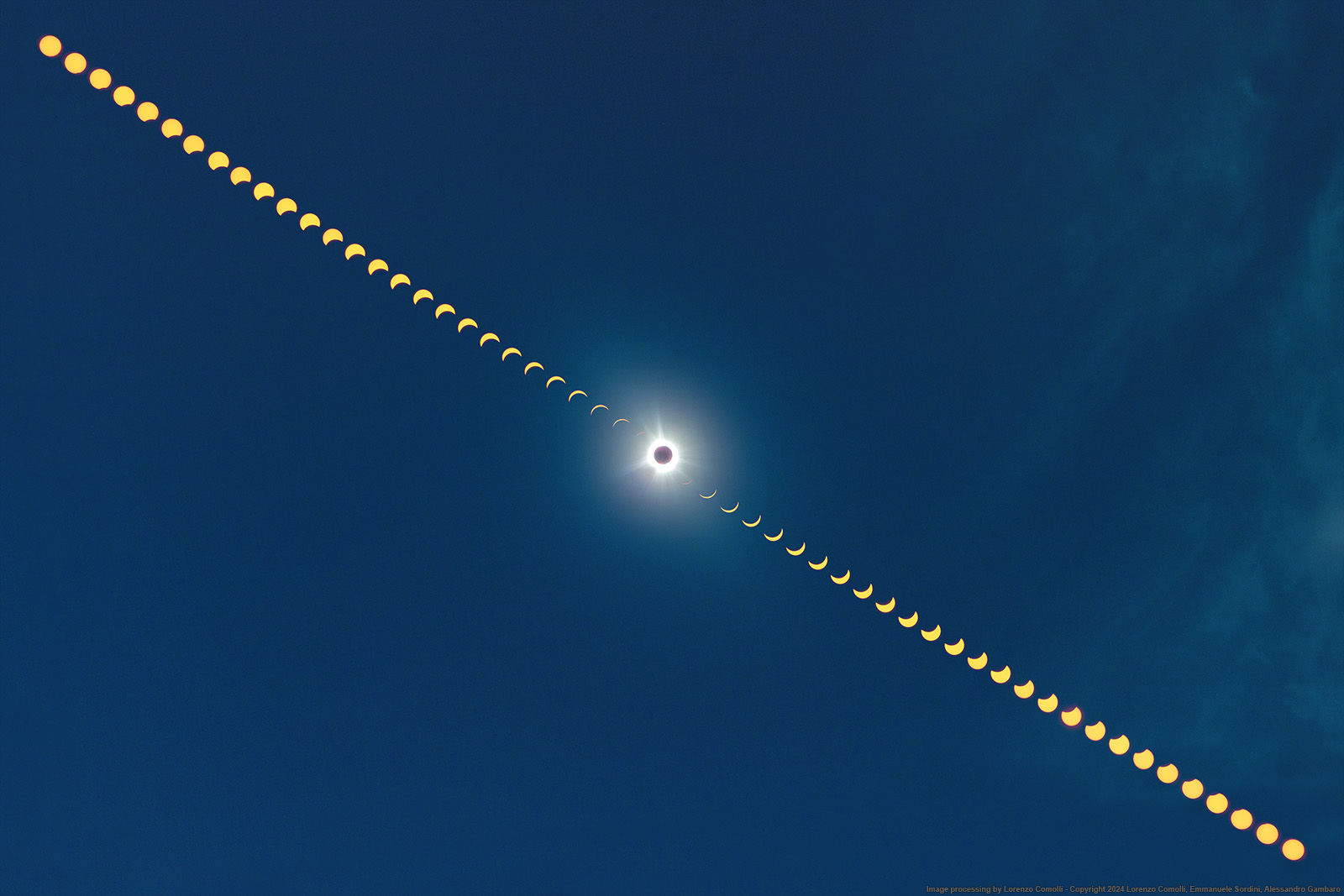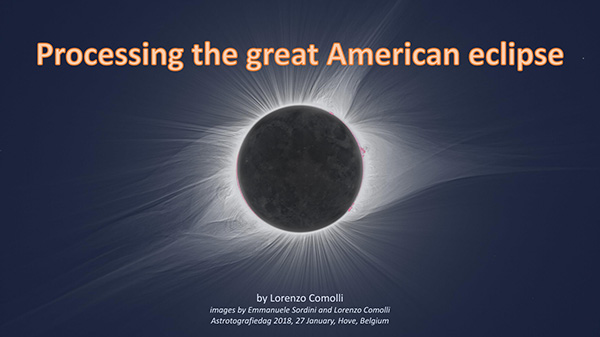|
A solar
eclipse greatly influences the Earth atmospere. The
temperature, relative humidity, luminance data show
typical trends, peculiar to each eclipse and location.
During this eclipse
I've used a T/RH datalogger with the sensors positioned
at 1 m heigth on a small tree, on the side in shadow
from the Sun light. This way data are quite reliable and
much less influenced by the ground temperature respect
to the measurements I've made in the past eclipses. In
this eclipse I've found a 5°C decrease, to be
compared to 9°C in 2017 USA Wyoming, to 4°C in
2006 Egypt, to 7°C
in 1999 Hungary.
A digital luxmeter
measured the horizontal luminance: this is a really
interesting measurement, that show the tremendous fall
of the light, between full Sun at 110000 lux and
totality at only 1.8 lux, to be compared to 3.4 lux 2017 USA Wyoming, 4.1 lux 2006 Egypt. The lower value, in my opinion, is
due to 2 reasons: first the eclipse was quite long and
deep (as confirmed by the SQM reading below), and second
the selected location was surrounded by many trees,
reducing the ambient light coming from the horizon.
During totality I've
measured the sky brightness with a SQM-L, obtaining
13.56 mag/arcsec^2, that is equivalent to the twilight
sky when the Sun altitude is -6°C, i.e. civil
twilight. Do you
what to feel how dark is the sky during totality? Wait
for the civil twilight, that is about 30 min after
sunset!
Here are the plots of:
-
temperature
-
relative humidity
-
luminance
|



